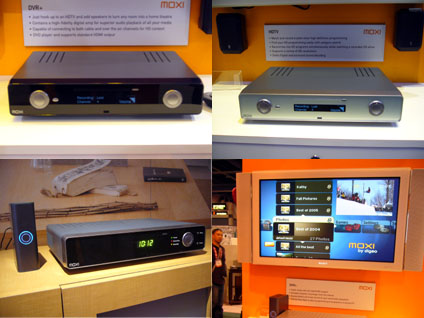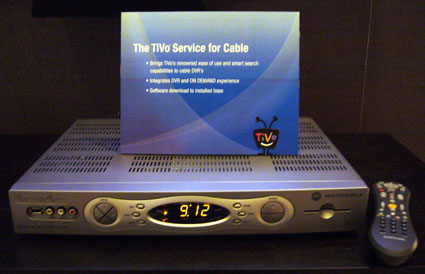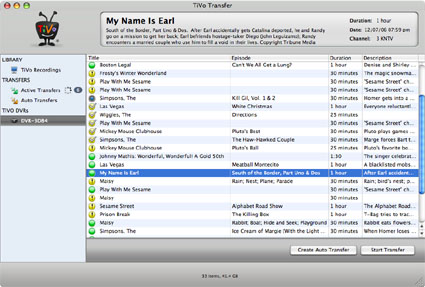In a relationship announced nearly two years ago, the Comcast TiVo is just about here and on public display at CES. (Rumor has it, they showed back-room demos for VIPs at the 2006 CES.) There were at least three Motorola 6412 units running TiVo software in the booth. Not only did I poke around on them, I had the chance to sit down privately with David Sanford, VP of Product Management in the Service Provider group — one of the guys behind this custom build. In addition to the obvious functionality questions, I was particularly interested in learning of the deployment mechanics and the technologies in play.
Deployment
The Comcast-Moto-TiVo is already in trials, and deployment is slated to begin this Spring. The roll-out will be managed by Comcast — they set the schedule within their various markets. (As in: not all regions are likely to get the TiVo option simultaneously.) While there are no details on monthly pricing yet (which I assume could vary by market), David tells me Comcast really wants to get this product out there and is planning to charge only a “modest fee.” (I’ll take a stab and guess a $5 – $10 increase over current DVR rental fees would cover licensing and allow Comcast to make a few bucks without sticker shocking customers.)

So here’s how it works… You let Comcast know you want to upgrade your DVR to TiVo, they flip a switch, and your current Motorola box (6412 or 3412) downloads the software. Reboot, and voilà you have TiVo — with prior settings and recordings preserved and no truck roll required. Your current crappy Comcast remote will control the TiVo software, but as part of the upgrade Comcast will mail you a custom Comcast TiVo remote (with new OnDemand, A, B, C, and D buttons).
Read more



